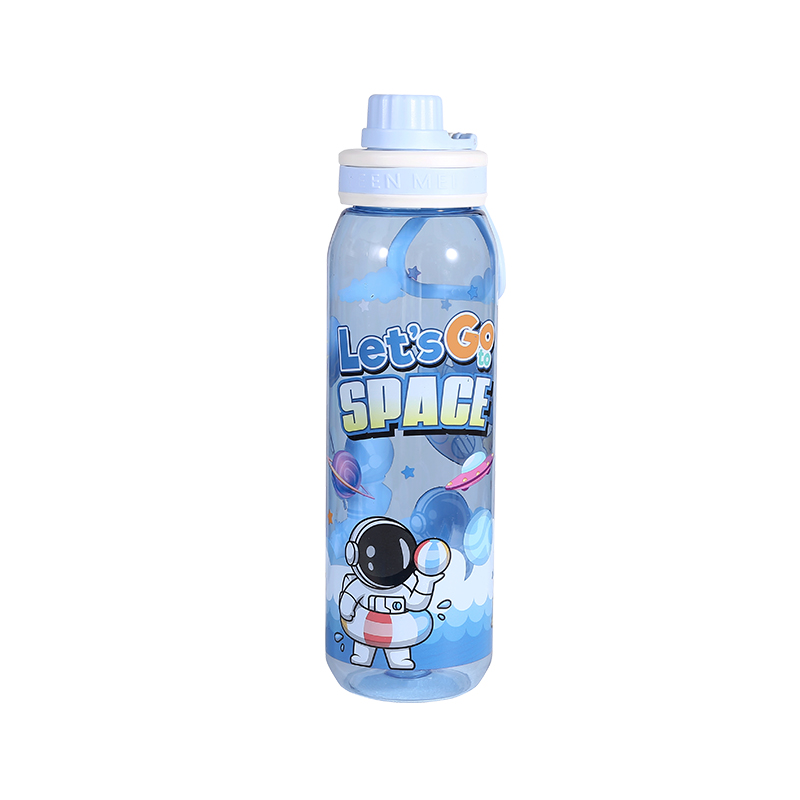For those who regularly use a plastic sports water bottle during outdoor activities such as hiking, cycling, or running, exposure to direct sunlight is inevitable. While these bottles are often designed for durability, users may wonder whether prolonged UV exposure can cause fading or discoloration over time. This article explores how sunlight affects plastic bottles, the materials used, and how to decrease the risk of visible deterioration.

How UV Rays Interact with Plastic
Ultraviolet (UV) radiation from the sun can have a degrading effect on many types of plastic. When plastic is exposed to sunlight for extended periods, UV rays can break down the chemical bonds in the material, causing a process called photodegradation. This typically results in color fading, surface chalking, and sometimes even weakening of the structure if exposure is extreme.
For a plastic sports water bottle, the immediate and visible consequence is discoloration. This might appear as uneven fading, dulling of bright colors, or yellowing in transparent bottles. Such effects are not just aesthetic but can also signal changes in the surface composition of the plastic.
Material Matters: Which Plastics Resist Sunlight?
The type of plastic used significantly influences how well a bottle withstands sun exposure. Tritan™ plastic, for instance, is known not only for its impact resistance but also for better UV stability compared to older plastics like polycarbonate. High-density polyethylene (HDPE) and polypropylene (PP) bottles often include UV stabilizers in their formulation, which help slow the fading process.
However, some lower-cost bottles made with basic plastic blends may lack UV-resistant additives and are more prone to noticeable color changes after spending long periods in the sun. Colored bottles with printed graphics or decorative coatings can also fade if the pigments or inks are not UV-protected.
The Role of Additives and Surface Treatments
Manufacturers of higher-end plastic sports water bottles often incorporate UV inhibitors or stabilizers during production. These additives absorb harmful UV rays and dissipate them as harmless heat, preventing the plastic from breaking down as quickly. Some bottles also feature special surface coatings or embedded dyes designed specifically to resist fading.
That said, even with these protective measures, long-term exposure to strong sunlight, such as leaving the bottle on a car dashboard or outdoor table day after day, can eventually cause some level of discoloration, particularly in lighter or more vivid colors.
Preventing or Slowing Color Fading
Users can extend the visual lifespan of their plastic sports water bottles by taking simple precautions. Avoiding prolonged sun exposure whenever possible is key. Storing the bottle in a bag, shaded area, or insulated sleeve helps protect it from UV damage. Washing the bottle gently with non-abrasive cleaners also prevents further surface wear that could exacerbate fading.
If maintaining a vibrant appearance is especially important, choosing bottles labeled as “UV-resistant” or “outdoor-safe” is a smart move. These are specifically designed to resist the effects of the sun and weather, making them more suitable for heavy outdoor use.
Conclusion
A plastic sports water bottle may experience some degree of fading or discoloration when exposed to prolonged and intense sunlight, especially if it is made from materials without UV protection. However, high-quality bottles often include stabilizers and coatings that significantly reduce this risk. By selecting UV-resistant materials and storing the bottle properly, users can keep their bottle looking newer for longer, even during frequent outdoor use.

 English
English 中文简体
中文简体 Español
Español